 Полная версия
Полная версияThe American Revolution
In July the enterprising Tryon conducted a raiding expedition along the coast of Connecticut. At New Haven he burned the ships in the harbour and two or three streets of warehouses, and slew several citizens; his intention was to burn the whole town, but the neighbouring yeomanry quickly swarmed in and drove the British to their ships. Next day the British landed at Fairfield and utterly destroyed it. Next they burned Green Farms and then Norwalk. After this, just as they were about to proceed against New London, they were suddenly recalled to New York by bad news.
In so far as these barbarous raids had any assignable military purpose, it was hoped that they might induce Washington to weaken his force at the Highlands by sending troops into Connecticut to protect the private property and chastise the marauders. After the destruction of the Highland forts in October, 1777, the defence of this most important position had been entrusted to the powerful fortifications lately erected at West Point.
Clinton captures the fortress at Stony Point, May 31, 1779A little lower down the river two small but very strong forts, at Stony Point on the right bank and at Verplanck’s Point on the left, guarded the entrance to the Highlands. While the fort at Stony Point was building, Sir Henry Clinton came up the river and captured it, and then, with the aid of its batteries, subdued the opposite citadel also. Stony Point was a rocky promontory washed on three sides by the waters of the Hudson. It was separated from the mainland by a deep morass, over which ran a narrow causeway that was covered at high tide, but might be crossed when the water was low. This natural stronghold was armed with heavy batteries which commanded the morass, with its causeway, and the river; and the British garrisoned it with six hundred men, and built two additional lines of fortification, rendering it well-nigh impregnable.
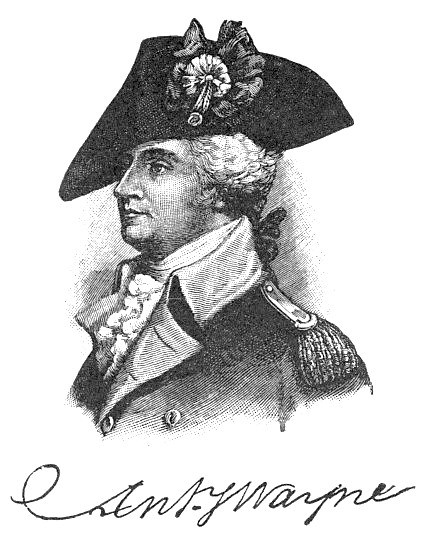
The acquisition of this spot seemed like the auspicious beginning of a summer campaign for Clinton’s army, which had been cooped up in New York ever since the battle of Monmouth. To have kept on and captured West Point would have gone a long way toward retrieving the disaster of Saratoga, but Washington’s force was so well disposed that Clinton did not venture to attempt so much as this. Such hopes, moreover, as he may have based upon the Connecticut raids proved entirely delusive. Washington’s method of relieving Connecticut and destroying Clinton’s scheme was different from what was expected. Among his generals was one whom the soldiers called “Mad Anthony” for his desperate bravery, but there was much more method than madness about Anthony Wayne. For the union of impetuous valour with a quick eye and a cool head, he was second to none. Twelve hundred light infantry were put at his disposal. Every dog within three miles was slaughtered, that no indiscreet bark might alarm the garrison. Not a gun was loaded, lest some untimely shot betray the approaching column. The bayonet was now to be put to more warlike use than the roasting of meat before a camp-fire. At midnight of the 15th of July the Americans crossed the causeway at low tide, and were close upon the outworks before their advance was discovered. The garrison sprang to arms, and a heavy fire was opened from the batteries, but Wayne’s rush was rapid and sure. In two solid columns the Americans came up the slope so swiftly that the grape-shot made few victims. Shoulder to shoulder, in resistless mass, like the Theban phalanx of Epaminondas, they pressed over the works, heedless of obstacles, and within a few minutes the garrison surrendered at discretion. In this assault the Americans lost fifteen killed and eighty-three wounded, and the British sixty-three killed. The rest of the garrison, 553 in number, including the wounded, were made prisoners, and not a man was killed in cold blood, though the shameful scenes in Virginia were fresh in men’s memories, and the embers of Fairfield and Norwalk still smouldered. The contemporary British historian Stedman praises Wayne for his humanity, and thinks that he “would have been fully justified in putting the garrison to the sword;” but certainly no laws or usages of war that have ever obtained among the people of the United States would have justified such a barbarous proceeding.[27]
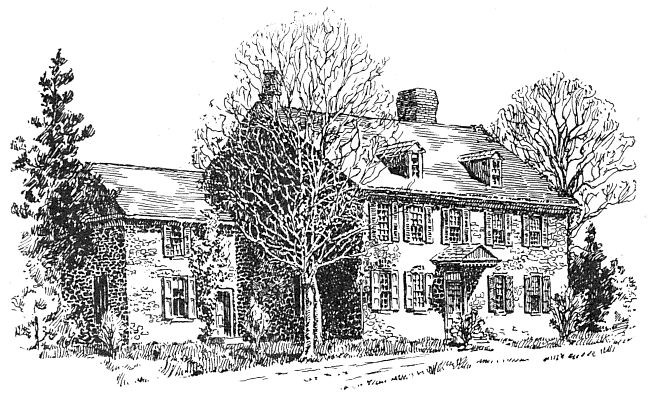
HOME OF ANTHONY WAYNE
Evacuation of Stony Point
The capture of Stony Point served the desired purpose of relieving Connecticut, but the Americans held it but three days. Clinton at once drew his forces together and came up the Hudson, hoping to entice Washington into risking a battle for the sake of keeping his hold upon Stony Point. But Washington knew better than to do so. In case of defeat he would run risk of losing the far more important position at West Point. He was not the man to hazard his main citadel for the sake of an outpost. Finding that it would take more men than he could spare to defend Stony Point against a combined attack by land and water, he ordered it to be evacuated. The works were all destroyed, and the garrison, with the cannon and stores, withdrawn into the Highlands. Sir Henry took possession of the place and held it for some time, but did not venture to advance against Washington.
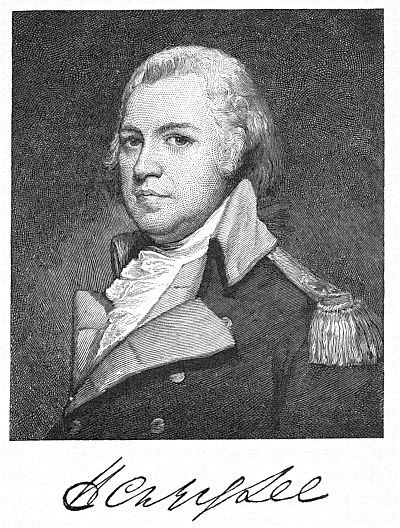
To give the British general a wholesome sense of his adversary’s vigilance, a blow was struck in an unexpected quarter. At Paulus Hook, on the site of the present Jersey City, the British had a very strong fort. The “Hook” was a long low neck of land reaching out into the Hudson. A sandy isthmus, severed by a barely fordable creek, connected it with the mainland. Within the line of the creek, a deep ditch had been dug across the whole isthmus, and this could only be crossed by means of a drawbridge. Within the ditch were two lines of intrenchments. The place was garrisoned by 500 men, but, relying on the strength of their works and their distance from the American lines, the garrison had grown somewhat careless. This fact was made known to Washington by Major Henry Lee, who volunteered to surprise the fort. On the night of the 18th of August, at the head of 300 picked men, Lee crossed the creek which divided Paulus Hook from the mainland. A foraging expedition had been sent out in the course of the day, and as the Americans approached they were at first mistaken by the sentinels for the foragers returning. Favoured by this mistake, they surmounted all the obstacles and got possession of the fort in a twinkling. Alarm guns, quickly answered by the ships in the river and the forts on the New York side, warned them to retreat as fast as they had come, but not until Lee had secured 159 prisoners, whom he carried off safely to the Highlands, losing of his own men only two killed and three wounded. This exploit, worthy of the good Lord James Douglas, has no military significance save for its example of skill and boldness; but it deserves mention for the personal interest which must ever attach to its author. In the youthful correspondence of Washington, mention is made of a “Lowland Beauty” for whom he entertained an unrequited passion. This lady married a member of the illustrious Virginian family to which Richard Henry Lee belonged. Her son, the hero of Paulus Hook, was always a favourite with Washington, and for his dashing exploits in the later years of the revolutionary war became endeared to the American people as “Light Horse Harry.” His noble son, Robert Edward Lee, has taken rank among the foremost generals of modern times.
CHAPTER XII
WAR ON THE OCEAN
Importance of the control of the waterUntil the war of independence the Americans had no navy of their own, such maritime expeditions as that against Louisburg having been undertaken with the aid of British ships. When the war broke out, one of the chief advantages possessed by the British, in their offensive operations, was their entire control of the American waters. Not only were all the coast towns exposed to their sudden attack, but on the broad deep rivers they were sometimes able to penetrate to a considerable distance inland, and by means of their ships they could safely transport men and stores from point to point. Their armies always rested upon the fleets as bases of operations, and soon lost their efficiency when severed from these bases. General Howe was not safe in Philadelphia until his brother had gained control of the Delaware river, and Burgoyne’s army invited capture as soon as its connection with the lakes was cut off. From first to last, the events of the war illustrated this dependence of the army upon the fleet. On the retreat from Lexington, it was only the ships that finally saved Lord Percy’s weary troops from capture; at Yorktown, it was only the momentary loss of naval superiority that made escape impossible for Cornwallis. For want of a navy, General Washington could not hold the island of New York in 1776; and for a like reason, in 1778, after the enemy had been reduced to the defensive, he could not prudently undertake its recapture. It was through lack of effective naval aid that the Newport expedition failed; and the events of 1779, in Virginia and Connecticut, bore sad testimony to the defenceless condition of our coasts.

Early in the war this crying want was earnestly considered by Congress, and efforts were made to repair it by the construction of a navy and the equipment of private cruisers. But the construction of a regular navy, which alone could serve the purpose, was beset with even greater difficulties than those which attended the organization of a permanent army. There was, indeed, no lack of good material, whether for ships or for seamen. New England, in particular, with its great length of seacoast and its extensive fisheries, had always possessed a considerable merchant marine, and nourished a hardy race of seafaring people. How formidable they could become in naval warfare, Great Britain was destined, nearly forty years afterward, to find out, to her astonishment and chagrin. But the absence of a central government was even more seriously felt in naval than in military affairs. The action of Congress was feeble, unintelligent, and vacillating. The “marine committees,” “navy boards,” and “boards of admiralty,” to which the work of creating a navy was entrusted, were so often changed in their composition and in their functions that it was difficult for any piece of work to be carried out in accordance with its original design. As there was a total absence of system in the department of admiralty, so there was utter looseness of discipline in the service. There were the same wranglings about rank as in the army, and the consequences were even more pernicious. It was difficult to enlist good crews, because of the uncertainty arising from the general want of system. The risks encountered were excessive, because of the overwhelming preponderance of the enemy from the outset. Of thirteen new cruisers laid down in the autumn of 1775, only six ever succeeded in getting out to sea. During the war one ship-of-the-line was built, – the America 74, first commanded by Captain John Barry;[28] but she was launched too late for active service. Between 1775 and 1783, there were twenty small frigates and twenty-one sloops-of-war in the service. Most of these were either captured by the enemy, or destroyed to prevent their falling into the enemy’s hands.[29] The armaments of these ships were very light; the largest of them, the Bon Homme Richard, was constructed for a thirty-eight, but her heaviest guns were only twelve-pounders.
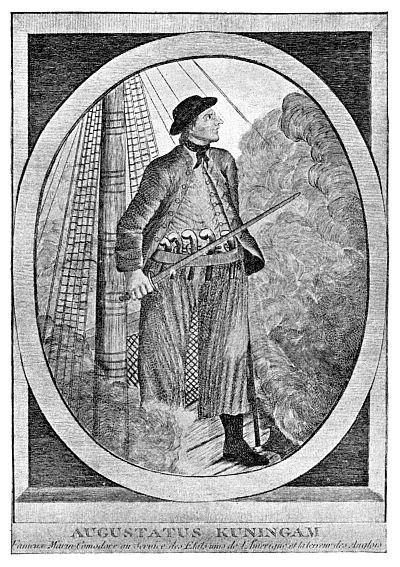
AUGUSTATUS KUNINGAM
American and British cruisers
Yet in spite of this light force, weak discipline, and unsteady management, the little American navy did some very good work in the course of the war, and it was efficiently helped by a multitude of private cruisers, just as the Continental army often got valuable aid from the militia. Before the French alliance more than six hundred British vessels had fallen prey to the American cruisers, and so venturesome were these swift little craft that they even hovered around the coast of England, and merchant vessels going from one British port to another needed the protection of a convoy. During the same period, about nine hundred American vessels were taken by British cruisers; so that the damaging power of the American marine seems to have amounted to about two thirds that of such part of the British marine as could be devoted to the injury of American shipping. The damage inflicted upon the Americans was the more serious, for it well-nigh ruined the New England fisheries and the coasting trade. On the other hand, the American cruisers caused marine insurance in England to rise to a far higher point than had ever before been known; and we learn from a letter of Silas Deane to Robert Morris that, shortly before the alliance between France and the United States, the docks on the Thames were crowded with French vessels loading with British goods that sought the shelter of a neutral flag.
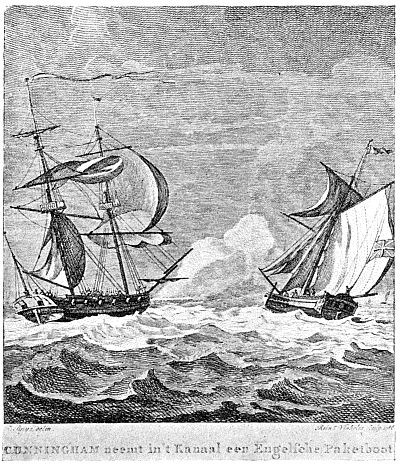
CONYNGHAM CAPTURING A BRITISH PACKET
In one respect the value of this work of the American cruisers was incalculable. It familiarized Europe with the sight of the American flag in European waters. It was of great importance that Europe should think of the new republic not as merely the theme of distant rumours, but as a maritime power, able to defend itself within sight of the British coasts; and in this respect it would be difficult to overrate the services rendered by the heroic captains who first carried the flag of the United States across the ocean, and bearded the lion in his native lair.
Wickes and ConynghamOf these gallant fellows, Lambert Wickes was the first, and his ship, the Reprisal 16, which carried Benjamin Franklin to France in the autumn of 1776, was the first American war vessel to visit the eastern shores of the Atlantic. After a brilliant cruise in the summer of 1777, she foundered off the banks of Newfoundland, with the loss of all on board. Next came Gustavus Conyngham, with the Surprise and the Revenge, which in the same summer took so many prizes in the North Sea and the British Channel that insurance rose as high as twenty-five per cent., and in some instances ten per cent. was demanded for the short passage between Dover and Calais.
Paul JonesBut the fame of both these captains was soon eclipsed by that of John Paul Jones, a Scotch sailor, who from boyhood had been engaged in the Virginia trade, and in 1773 had gone to Virginia to live. When war broke out Jones offered his services to Congress, and in October, 1776, his name appears as eighteenth in the list of captains in the new navy. From the outset he was distinguished for skill and bravery, and in 1778, being then thirty years old, he was sent, with the Ranger 18, to prowl about the British coasts. In this little ship he made a successful cruise in the Irish Channel, burned some of the shipping in the port of Whitehaven, in Cumberland, and in a fierce fight off Carrickfergus captured the British sloop-of-war Drake 20; losing only eight men in killed and wounded, while the Drake lost forty-two. With the Drake and several merchant prizes, Jones made his way to Brest, and sent the Ranger home to America, while he remained to take command of a more considerable expedition that was fitting out for the following year.
Franklin’s supervision of maritime affairsAlong with the other duties of Franklin, as minister of the United States at the French court, was joined a general superintendence of maritime affairs. He was a sort of agent plenipotentiary of Congress in all matters relating to the navy. He had authority from Congress to issue letters of marque, and exercised it freely, while imposing restrictions that were characteristic of his magnanimous spirit. In 1779, he issued instructions to all American cruisers that, in whatsoever part of the sea they might happen to meet the great discoverer Captain Cook, they were to forget the temporary quarrel in which they were fighting, and not merely suffer him to pass unmolested, but offer him every aid and service in their power; since it would ill beseem Americans to lift their hands against one who had earned the reverence and gratitude of all mankind. So in the instructions given to Paul Jones, he ordered him not to burn defenceless towns on the British coast except in case of military necessity, and in such case he was to give notice, so that the women and children, with the sick and aged inhabitants, might be removed betimes.

The expedition of which Paul Jones took command in the summer of 1779 was designed for a signal “demonstration” upon the coasts of Great Britain. The object of the British raids in Virginia and Connecticut was partly to terrify the Americans by a bold and savage assertion of the ubiquity of British power. The expedition of Paul Jones was to serve as a sort of counter-irritant. The confused and indefinite character of the American naval service at that time could not have a better illustration than is to be found in the details of the little squadron with which he was called upon to undertake his perilous task. The flagship was an old Indiaman named the Duras, purchased by the French government and fitted up for the occasion. In compliment to the author of Poor Richard’s maxims, her name was changed to “Bon Homme Richard.” She was an exceedingly clumsy affair, with swelling bows and a tower-like poop such as characterized the ships of the seventeenth century. She was now pierced for a thirty-eight-gun frigate, but as there was delay in procuring the eighteen-pounders suited for such a craft, her main deck was armed with twelve-pounders instead. In the gun-room below, Captain Jones had twelve portholes cut, in which he mounted six old eighteens, that could be shifted from side to side as occasion required. Leaving these eighteens out of the account, the force of the Bon Homme Richard was about equal to that of a thirty-two-gun frigate. This singular vessel was manned by a crew as nondescript as herself, – a motley gang of sailors and marines from nearly every country in Europe, with half a dozen Malays into the bargain. To these a hundred New England men were afterwards added, bringing up the whole number to 380. For this flagship three consorts were supplied, under the direction of the French government. The Pallas, a merchant vessel pierced for the occasion, was thus transformed into a thirty-two-gun frigate; the Vengeance and Cerf were of smaller calibre. All these ships were French built. To these Franklin added the Alliance 32, which happened to be in a French port at the time. The Alliance, lately built at Salisbury, in Massachusetts, and named in honour of the treaty between France and the United States, was a swift and beautiful ship, one of the finest in the American navy. Unfortunately, it was thought desirable to pay a further compliment to our new allies by appointing a French captain to command her, and this step gave rise to so much discontent and insubordination as well-nigh to destroy her efficiency. Nor had Captain Landais done anything to merit such distinction; he was simply an adventurer, seeking notoriety in the American service.

PAUL JONES’S COMMISSION
Jones’s cruise on the British coast
The ships in this motley squadron were not privateers. The Alliance was a regular member of our navy. The French-built ships were regarded as loaned to the United States, and were to resume their French nationality after the termination of the cruise; but they were all duly commissioned by Franklin, under the powers delegated to him by Congress. For the time being, they were part of the American navy and subject to its regulations. Their commodore, Paul Jones, has often been spoken of as a privateer, sometimes as a pirate, but he was as much a regular captain in our navy as Greene was a regular general in our army. Though, however, there could be no doubt as to the legitimate naval character of the expedition, a more ill-assorted or disorderly squadron was perhaps never sent to sea. The summer was spent in cruising about the British coasts, and many prizes were taken; but the insubordination of the French commanders was so gross that during a large part of the time the ships were scattered in all directions, and Jones was left to cruise alone. On the 17th of September, having got his fleet together, he entered the Frith of Forth, and came within gunshot of Leith, which he intended to attack and capture. Sir Walter Scott, then a schoolboy at Edinburgh, has given, in the introduction to “Waverley,” a graphic description of the excitement which was felt upon that occasion. But, as Scott says, “a steady and powerful west wind settled the matter by sweeping Paul Jones and his vessels out of the Frith of Forth.” Four days later, the Bon Homme Richard and the Vengeance entered the river Humber, and destroyed several vessels. On the 23d, the Alliance and Pallas having come up, a British fleet of forty sail was descried off Flamborough Head.
He meets a British fleet off Flamborough HeadThey were merchant vessels bound for the Baltic, under convoy of the Serapis 44, Captain Richard Pearson, and the Countess of Scarborough 20, Captain Piercy. Jones instantly gave chase, ordering his consorts to follow and form in line of battle; but the Alliance disobeyed and ran off to some distance, for a time disconcerting the Pallas, which could not understand the discrepancy between the signals and the movements. The British merchant ships crowded all sail to get out of the way, but the two frigates accepted Jones’s challenge, and came up to fight. The Countess of Scarborough was very inferior in size and armament to the Pallas, while on the other hand the Serapis was much more powerful than the Bon Homme Richard. She was a two-decker, mounting twenty eighteen-pounders below, and twenty nine-pounders above, with ten six-pounders on her quarter-deck and forecastle; so that she could throw 300 pounds of metal on a broadside. The Bon Homme Richard, with her six eighteens, could indeed throw 312 pounds on a broadside, but her weight of metal was very badly distributed among light guns. Without her eighteens, she could throw only 204 pounds on a broadside, being thus inferior to her opponent by one third. The Serapis had a crew of 320 well-trained British sailors, and she was a new and fast ship, perfect in all her appointments.
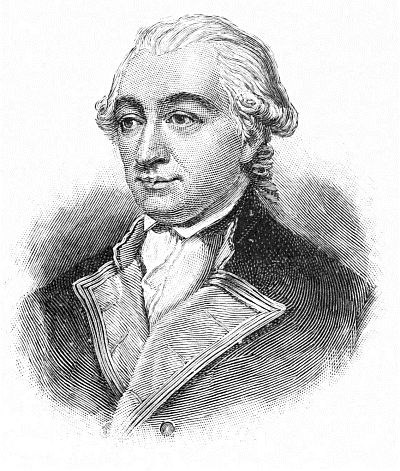
CAPTAIN PEARSON
Terrific fight between the Serapis and the Bon Homme Richard, Sept. 23, 1779
The fight began at half past seven o’clock, a little before moonrise, on a cloudy evening, in smooth water. The two principal opponents delivered their entire broadsides at the same moment. At this first fire, two of the old eighteens in the American frigate burst, killing a dozen men. After this disaster, no one had confidence enough in such guns to fire them again, so that the Bon Homme Richard was at once reduced to two thirds the force of her antagonist, and in ordinary fight must soon have been overcome. A brisk cannonade was kept up for an hour, while the two ships manœuvred for a raking position. The Serapis, being much the better sailer, was passing across her adversary’s bows, with very little elbow-room, when Jones succeeded in running his vessel into her just aft of her weather beam. For a moment all firing ceased on both ships, and Captain Pearson called out, “Have you struck your colours?” “I have not yet begun to fight,” replied Captain Jones. For a moment the ships separated, the Serapis running ahead almost in a line with the Bon Homme Richard. The Serapis now put her helm hard down and was boxhauled, in order to luff up athwart her adversary’s bow, and thus regain her raking position; but the Bon Homme Richard changed her tack, and presently, in a dense cloud of smoke, the two ships came together again, the British bowsprit passing over the high old-fashioned poop of the American vessel. This was just what Jones desired, and as he stood there on his quarter-deck he seized a stout rope, and lashed the enemy’s jib-boom to his mizzen-mast. Thus tied fast, the pressure of the light wind brought the ships alongside, the head of the one lying opposite the stern of the other. Grappling-hooks were now thrown into the quarter of the Serapis, and with repeated lashings fore and aft the two monsters were held together in deadly embrace. So close did they lie that their yards were interlocked, and some of the guns of the Serapis became useless for want of room to use the rammers. The advantage of her superior armament was thus in some measure lost, while her advantage in quickness of movement was entirely neutralized. Still her heavy guns at this short range did frightful execution, and the main deck of the Bon Homme Richard was soon covered with mangled and dying men, while her timbers were badly shivered and many cannon were knocked from their carriages. Unable to bear this terrible fire, the Americans crowded upon the upper deck in such numbers as easily to defeat the British attempts to board. Parties of marksmen, climbing into the rigging, cleared the enemy’s tops, and shot down every man upon the Serapis who ventured from under cover. Hand-grenades were thrown into her portholes to slay the gunners; and presently one bold fellow, crawling out to the very end of the Bon Homme Richard’s main-yard, just over the main hatchway of the Serapis, dropped one of these mischievous missiles through the hatchway, where it ignited a row of cartridges that were lying upon the main deck. The explosion ran swiftly along the line, as through a pack of gigantic fire-crackers. More than twenty men were blown into fragments, their heads, arms, and legs flying in every direction, while forty others were disabled. With the havoc already wrought by the guns, the Serapis had now lost two fifths of her crew, and her fire perceptibly slackened; so that the Americans were able to go below and work their guns again, pouring into the British portholes a storm of grape and canister which made an awful carnage.



